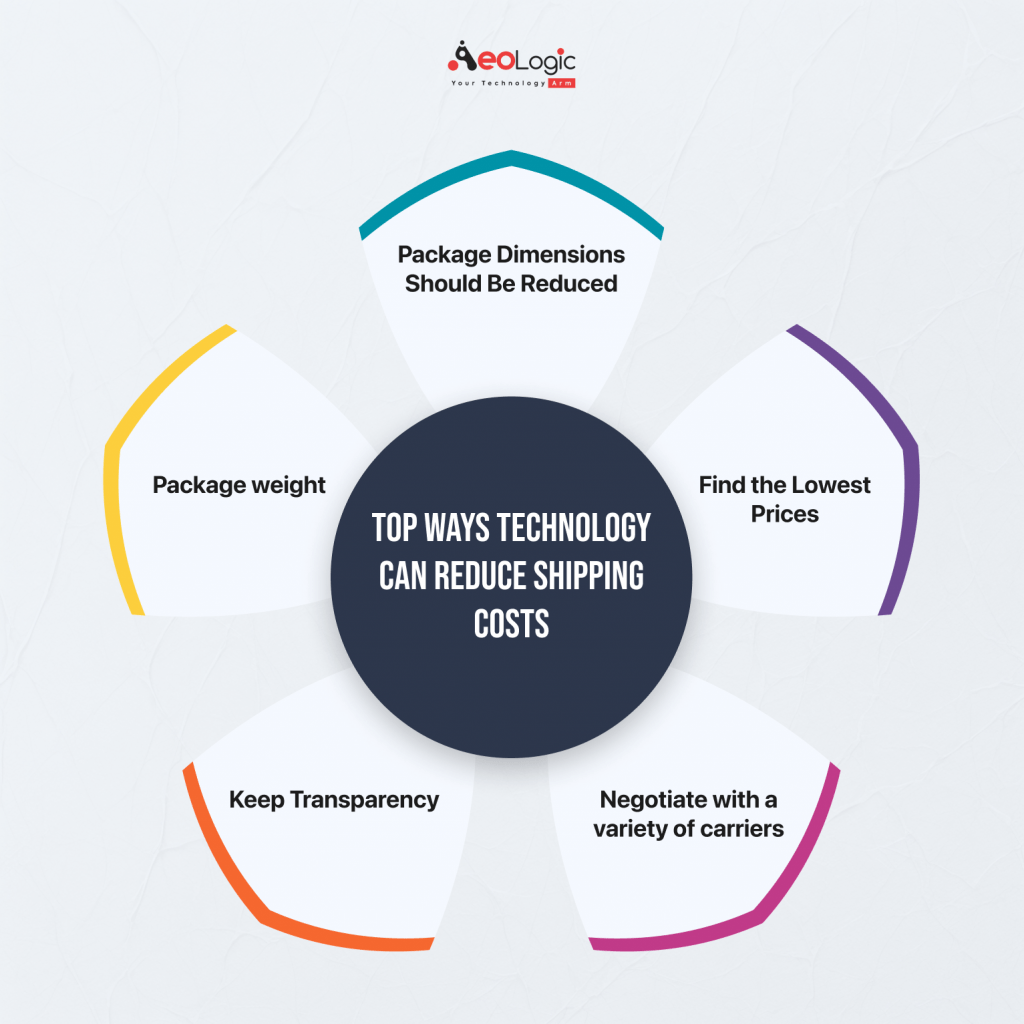With the trucking industry facing a shortage of drivers, it is more important than ever for shippers to understand how does technology help reduce less-than-truckload (LTL) costs?.
Transportation costs can be a major expense for companies and organizations of all sizes. In fact, some companies are realizing that they’re spending an increasing share of their budgets on transportation. As a result, they’ve been looking for ways to reduce their LTL costs without sacrificing service levels.
LTL shipments are often more expensive than the cost of shipping a full truck. For example, if you’re ordering something from Amazon, they’ll offer you three different shipping options: one for two-day shipping where they deliver it to your doorstep in two days, one for four-day shipping where they drop it off at the local post office and you get it in four days, and then there’s ground shipping where they ship it to your door on the same day you order it and you get it within five to eight business days.
Lets begin!
Table of contents
- Overview
- What is LTL Shipping?
- The Importance of LTL Shipping
- Top 5 ways Technology can Reduce Shipping Costs
- How Does Technology Reduce Costs?
- The Role of the Three Key Players in LTL Shipping
- Why Should Companies Consider Investing in Technology?
- Conclusion
Overview
LTL shipping is a type of freight transport that uses trailers and other containers to move cargo between locations. It is much cheaper than other types of freight transport, but it can be difficult to find an LTL carrier that will take your business.
If you need to ship something from one place to another, LTL shipping might be the best option for you. This type of freight transport has many advantages over other types of cargo transportation, especially when it comes to cost savings.
What is LTL Shipping?
Technology is one of the most important tools in the LTL shipping industry. LTL shipping is a method of transportation that allows for the shipment of less-than-truckload (LTL) freight, which means it does not require a tractor trailer to haul it from point A to point B. Instead, it uses smaller vehicles that can be used for shorter distances between cities. LTL shipping saves money for companies because they do not need to pay for a larger vehicle to transport their goods and they do not have to worry about transporting them over long distances.
The Importance of LTL Shipping
LTL shipping is an important part of the global economy because it allows businesses around the world to ship their products and supplies quickly and efficiently. It also helps keep costs down for consumers who buy goods online or in person from foreign markets.
The importance of LTL shipping cannot be emphasized enough. It has been proven time and time again that LTL shipping is more cost-effective than other modes of transportation such as trucking or railroads. It also allows businesses to save money while also saving time and space on their premises by transporting their goods through this method instead of having them shipped by truck.
Also Read: The Role of AI in Education And Learning: Just Promises Or Revolution
Top 5 ways Technology can Reduce Shipping Costs

1. Package Dimensions Should Be Reduced
Because the size of your goods affects the shipping prices paid by shipping companies and carriers, it is critical to make your shipments as compact as possible.
There are several ways to reduce the size of your package, including the following:
• Making use of smaller packaging. • Snugly fitting boxes require no filler material. • Combine several items into a single bundle.
2. Find the Lowest Prices
Not all carriers are created equal, and this is especially true when it comes to shipping costs. Rates can differ dramatically between carriers, depending on truck or container availability, delivery distance, cargo weight and/or dimensions, and carrier-specific fees, which fluctuate depending on capacity and demand. It is hard to keep track of these prices and calculate them accurately for each shipment. Because of this lack of awareness, many businesses repeatedly overpay for freight.
3. Negotiate with a variety of carriers
Too many businesses continue to employ the first shipping provider they come across. Clearly, that is a bad idea. Almost all freight companies alter their pricing based on volume. The lower the price of the goods, the higher the volume.
Unfortunately, many small businesses are unaware that they have some pricing negotiating power. Call or visit the offices of a few regional airlines. Learn about the size and weight of your box, as well as its origin and destination, and use this knowledge to negotiate a better bargain.
4. Keep Transparency
Be as clear and open as possible when dealing with your 3PL concerning a shipment. Transparency about your needs guarantees the most accurate cost from the start and reduces the potential for unpleasant surprises.
You risk paying additional costs if you forget key aspects like insurance requirements, loading and unloading practices, or other delivery laws.
5. Package weight
Most shipping service providers charge based on the weight and dimensions of the box, which is why businesses are taking steps to wrap their items according to usefulness rather than adding unnecessary paddings, durable packages, and so on, resulting in secondary and tertiary packing.
How Does Technology Reduce Costs?
Technology has played a large role in helping reduce costs associated with LTL shipping as well as making it an even more popular mode of transportation than ever before. It has allowed companies to reduce costs significantly while also increasing efficiency because they don’t have to worry about how long it takes for their trucks
Technology has made LTL shipping more cost-effective than ever before. Companies can use software programs like to analyze shipments so they know exactly what they need ahead of time. Then they can schedule delivery times based on how long it takes for a truck carrying their shipment to arrive at its destination point.
Also Read: Why Is CRM Software a Game-changer When It Comes to Delivering Better Customer Experiences?
The Role of the Three Key Players in LTL Shipping
Technology is a huge part of the shipping world, and it’s important to understand how technology can help reduce costs.
There are three key players involved in LTL shipping: shippers, carriers, and receivers.
- Shippers: Shippers are people or businesses that ship goods from one place to another.
- Carriers: Carriers handle the transportation of those goods between their origin and destination; they also purchase any required equipment or services to get the job done.
- Receivers: Receivers make sure that the things being shipped are delivered in good condition. They’re usually warehouses or distribution centers that receive shipments from carriers or shippers.
Why Should Companies Consider Investing in Technology?
One way technology can help companies reduce costs is by reducing labor costs. Shippers don’t have to hire as many workers. They just need someone who knows how some kind of machine works, like an assembly line worker, so they can save money by not having so many employees on their payrolls. And carriers don’t have to pay for as much training; instead, they can use software or robotic systems to perform tasks at a lower cost than human workers would require.
Also Read: How RFID Solutions Help in Inventory Management
Conclusion
The conclusion of this article is that technology can help reduce the costs of less-than-truckload freight shipments. Companies are using technology to increase efficiency and decrease costs in their LTL operations.
Hence, technology is a powerful tool in the LTL industry. It can help reduce LTL costs by improving the efficiency of the entire process, from shipping to receiving and processing. This technology can be put to use in several ways, including using robotics and computerized systems to reduce labor costs and automate operations. By using automated software, companies can optimize their current processes and plan for future growth with greater ease than ever before.
The appropriate technology partner can help you speed up your fulfillment operations, retain your B2B and B2C customers, and save money on transportation and logistics. On the other hand, the improper partner might necessitate significant expenditures without providing the long-term return you deserve.
If you are interested in elevating your businesses using technology, connect with our industry experts at Aeologic Technologies.
Also Read: The Role of AI in Education And Learning: Just Promises Or Revolution
Related Blogs:
- How AI/ML Can Change the Public Transportation Industry
- Transforming Business With Digital Technology in the Oil Palm Industry in India
- Importance of Digital Asset Management in the Retail Industry
- How AI is Transforming the Agriculture Industry
- 10 Ways to Use Artificial Intelligence to Improve Business Processes
- The Future of IoT Technology in Convenience Stores
- Building Manufacturing Resilience Through AI and ML






